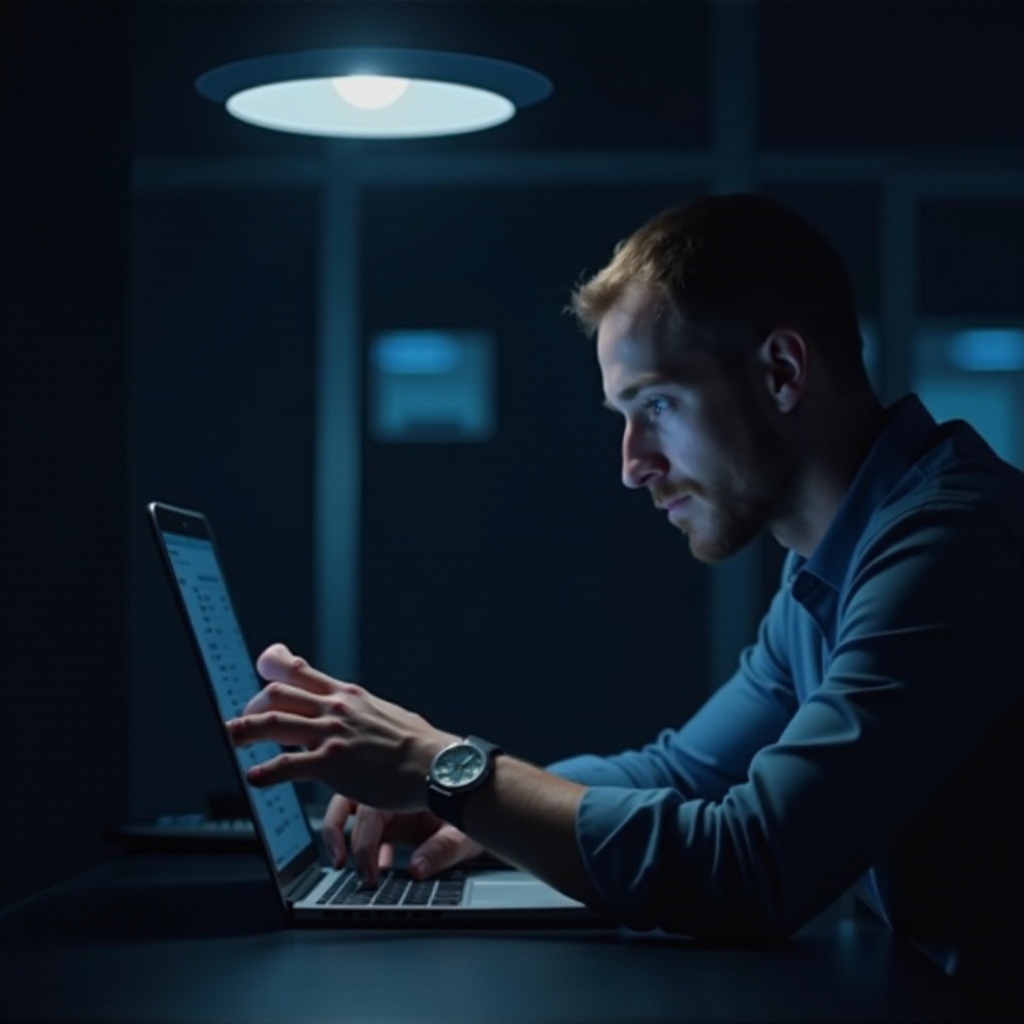Introduction
Experiencing a laptop monitor that goes black randomly can be both frustrating and problematic, disrupting productivity or entertainment. Whether it occurs during a crucial work meeting or an intense gaming session, the sudden screen blackout causes confusion and concern. It is crucial to understand the root causes of this issue and to know viable solutions, whether they are software fixes or hardware checks. This guide aims to help you diagnose the problem efficiently and provide practical solutions, along with preventive measures to avoid future occurrences.

Getting to the Root: Why Your Laptop Monitor Goes Black Randomly
Diagnosing why your laptop screen goes black randomly involves understanding both software and hardware potential issues. Software troubles could include outdated drivers or operating system mishaps that disrupt display functions, leading to blackouts. Meanwhile, hardware issues such as loose connections, overheating components, or faulty cables could also be responsible. Additionally, dust accumulation obstructing internal airflow can cause overheating, resulting in a screen going dark. Recognizing these potential causes is the first step in identifying and rectifying the issue.
Initial Steps for Troubleshooting
Before proceeding to advanced solutions, you can often resolve the issue with some initial troubleshooting steps. These basic checks can sometimes quickly address the problem.
Checking Physical Connections
First, verify the cable connections between your laptop and its monitor. Ensure they are secure and show no signs of damage.
Restarting Your Laptop
Restarting can often resolve temporary glitches. Completely shut down your laptop, then power it back on.
Assessing Power Source Integrity
Ensure your laptop receives consistent power by examining the power adapter and battery. Look for any potential malfunctions.
These straightforward steps might identify simple issues, offering a quick resolution.
Exploring Software Solutions for Black Screen Problems
If the basic checks do not resolve the issue, it could be associated with a software glitch. Here’s how you can tackle these concerns.
Updating or Reinstalling Display Drivers
Out-of-date or corrupted display drivers can cause screen problems. Make sure to update your drivers from the manufacturer’s website or via the device manager.
Performing OS and BIOS Updates
Keeping your OS and BIOS updated is vital for system stability. Look for and install any pending updates.
Running a Malware System Scan
Malware can interfere with numerous system functionalities, including your display. Perform a thorough scan using reliable antivirus software to eliminate any threats.
Not only can updating software address current challenges, but it also equips your system against future issues.

Tackling Potential Hardware Issues
When software solutions are ineffective, the issue might be hardware-related, necessitating component checks or replacements.
Preventing Overheating and Cleaning Components
Overheating might cause the screen to turn off. Ensure internal fans and vents are clean to prevent overheating.
Inspecting and Replacing Faulty Cables or Connectors
Check cables and connectors for any damage. If you detect issues, replace them to secure stable connections.
Evaluating Potential Hardware Failures
There may be a component in your laptop that fails. A specialist can evaluate and identify any faulty hardware that needs replacement.
Hardware repairs typically require more expertise but can fix issues unsolved by software tweaks.
Preventive Measures for Reliable Laptop Monitor Performance
Implementing preventive strategies can help maintain your device’s reliability and reduce the risk of future screen blackouts.
Maintaining Software Health
- Regularly update your system and drivers.
- Remove unnecessary programs to ensure optimal performance.
Routine Hardware Care
- Periodically clean your laptop’s internals to avoid dust buildup and overheating.
Monitoring Power and Battery Management
- Ensure usage of reliable power sources and monitor battery health to prevent disruptions.
Taking proactive steps can significantly lower the likelihood of encountering random screen blackouts.

Conclusion
Random screen blackouts can disrupt your daily operations, but they are typically solvable through simple checks, software updates, and hardware evaluations. By grasping the underlying causes and executing preventive measures, you can keep your laptop monitor functioning smoothly and effectively.
Frequently Asked Questions
Can a black screen be a sign of a malware issue?
Yes, malware can disrupt normal system functions, including screen display. Conduct a thorough system scan regularly to rule out this cause.
Should I always seek professional help for a black screen problem?
Not necessarily. Start with basic troubleshooting and software updates. If problems persist, then consult with a hardware specialist.
What preventative measures can I take to avoid future black screen issues?
Regular updates, routine cleaning, and careful power management play a pivotal role in preventing screen blackouts. These steps help maintain the smooth function of your device.
